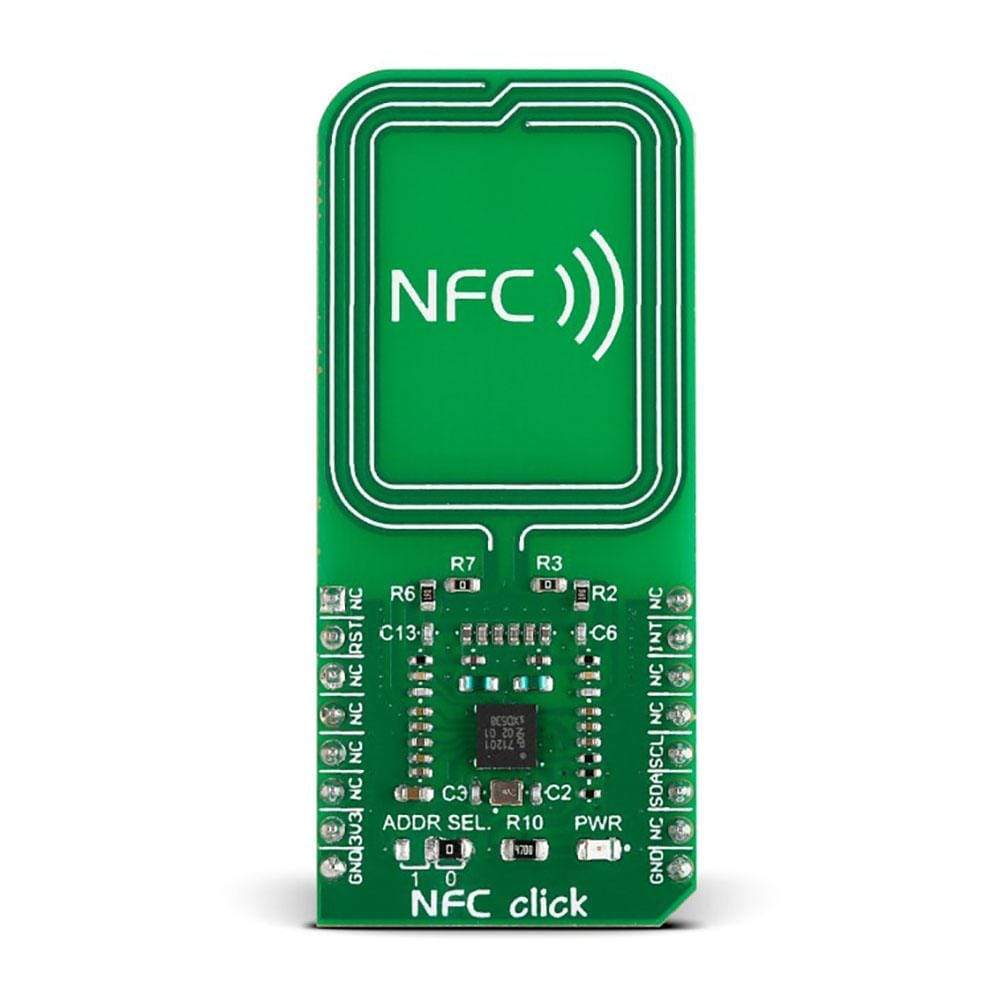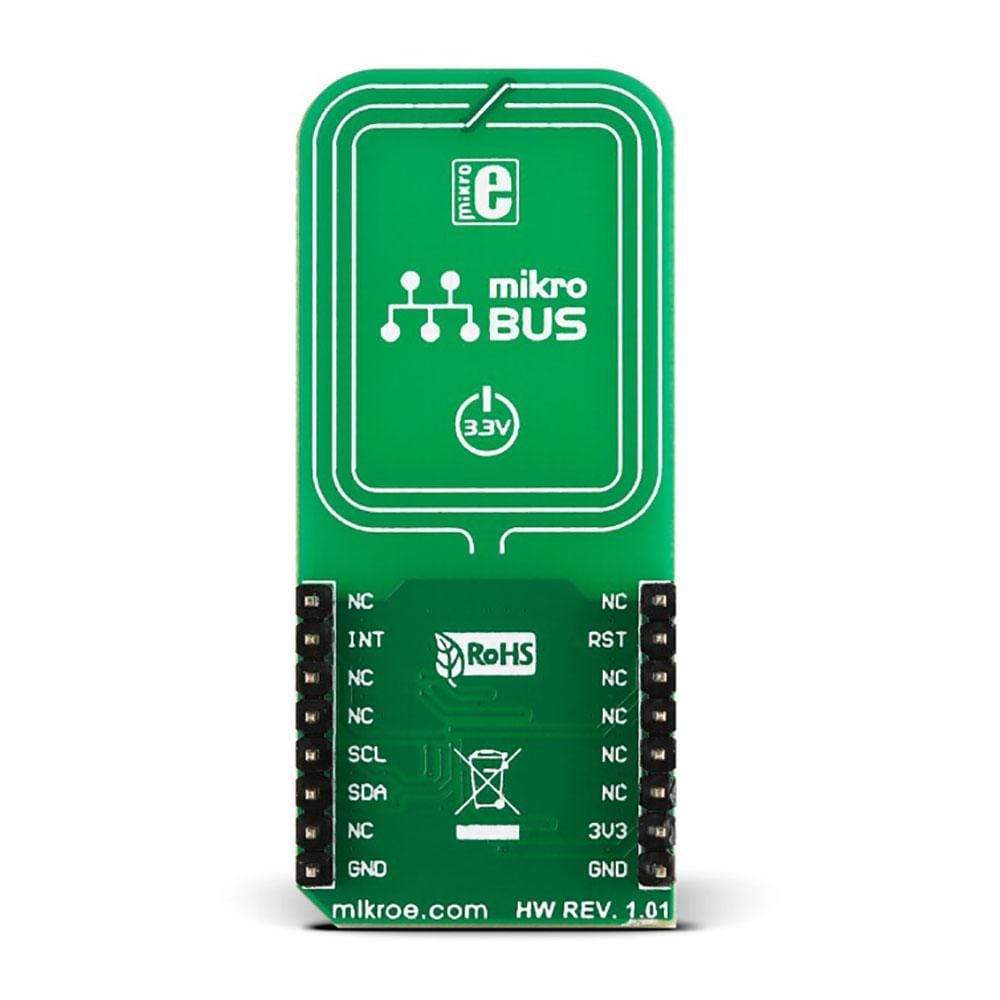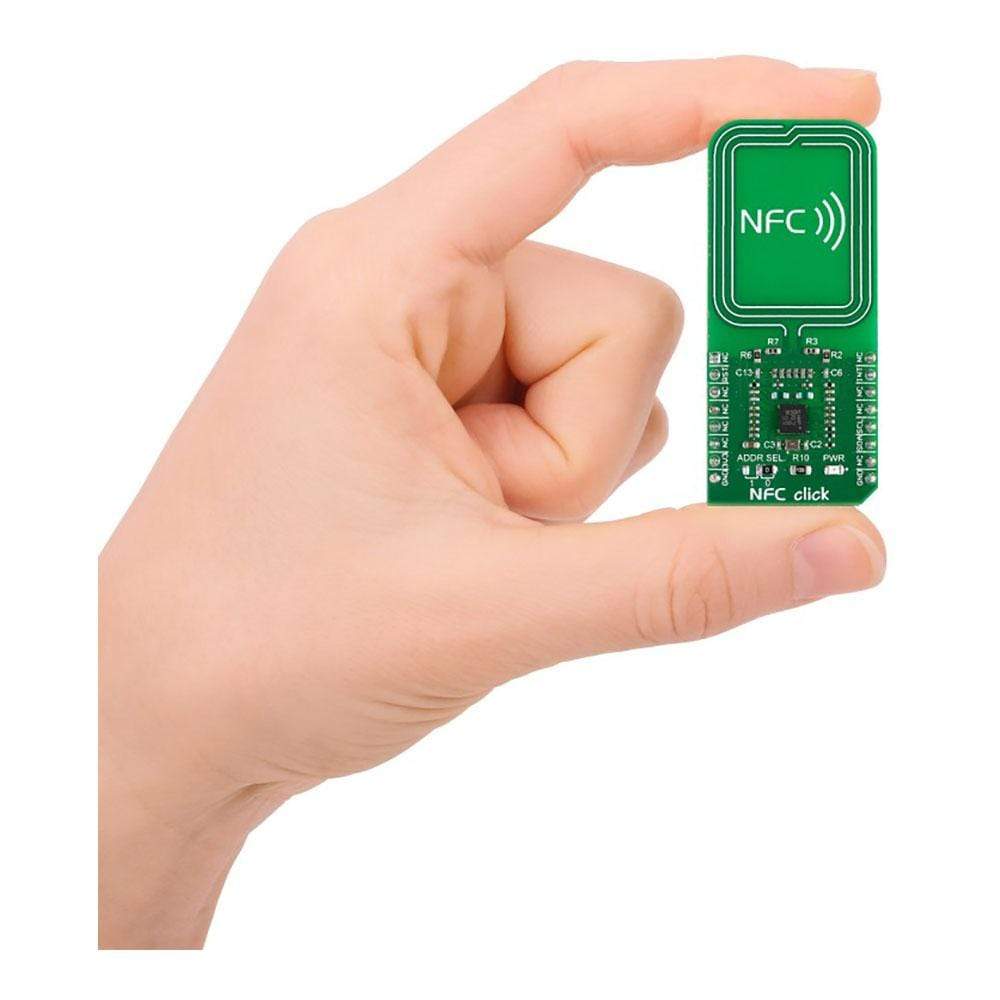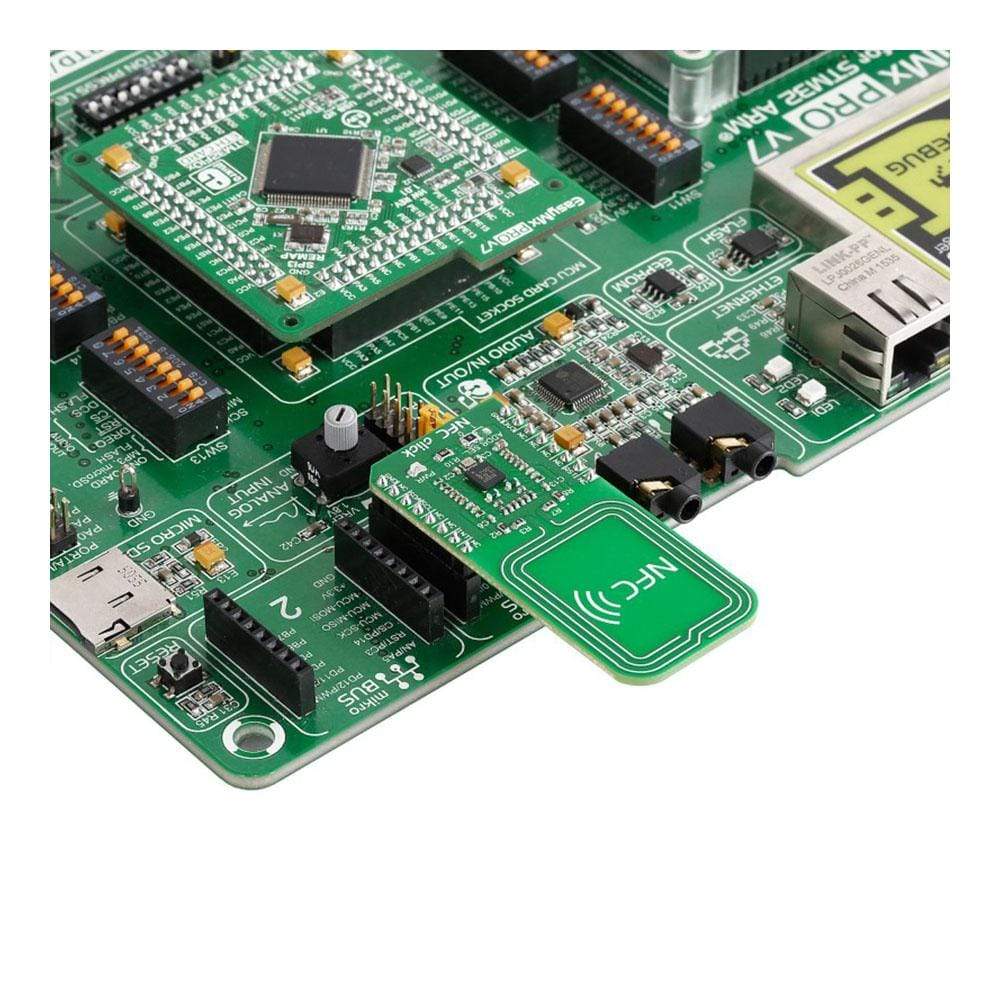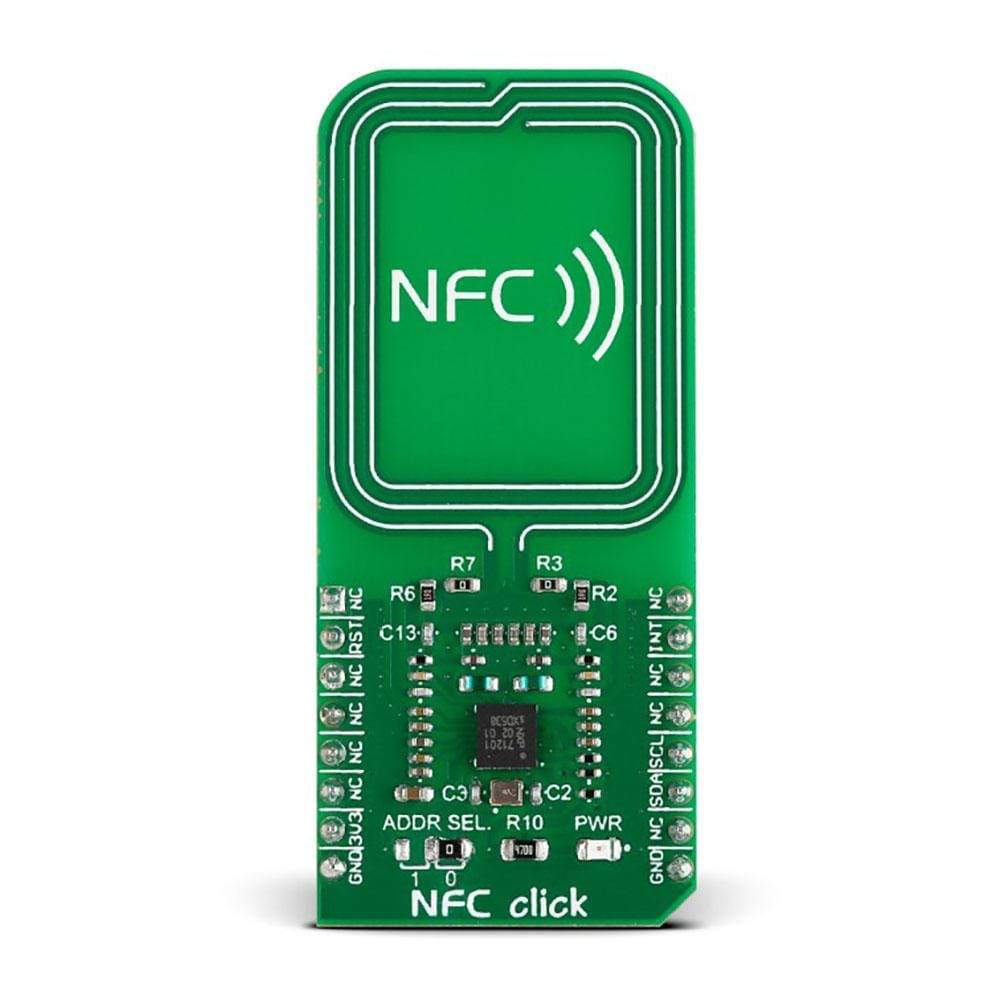
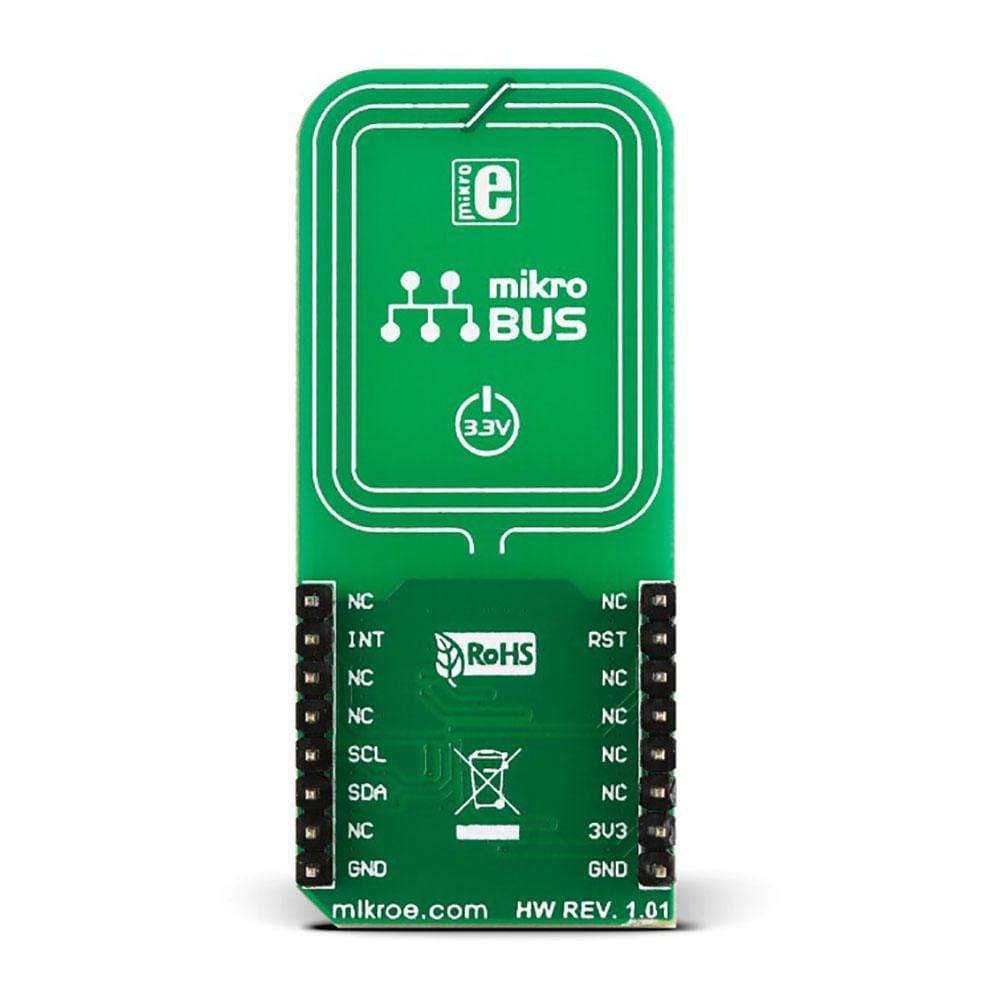
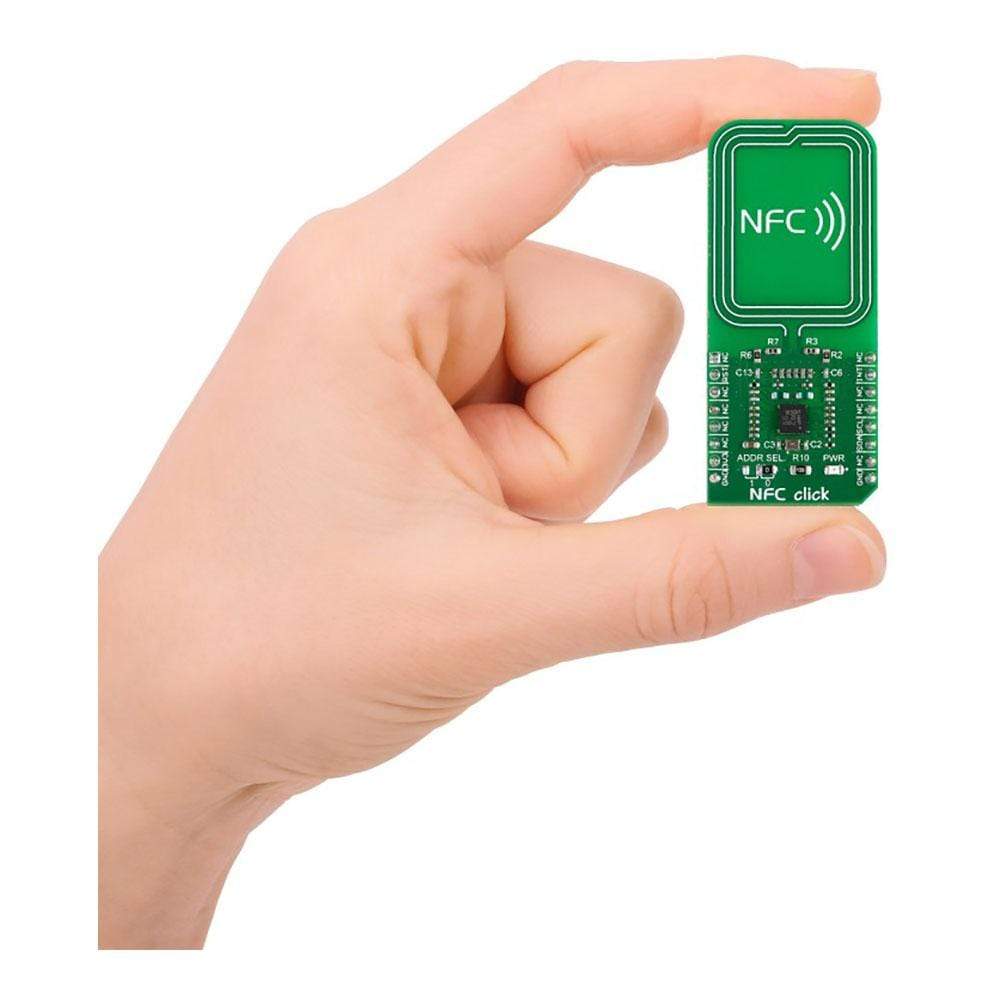
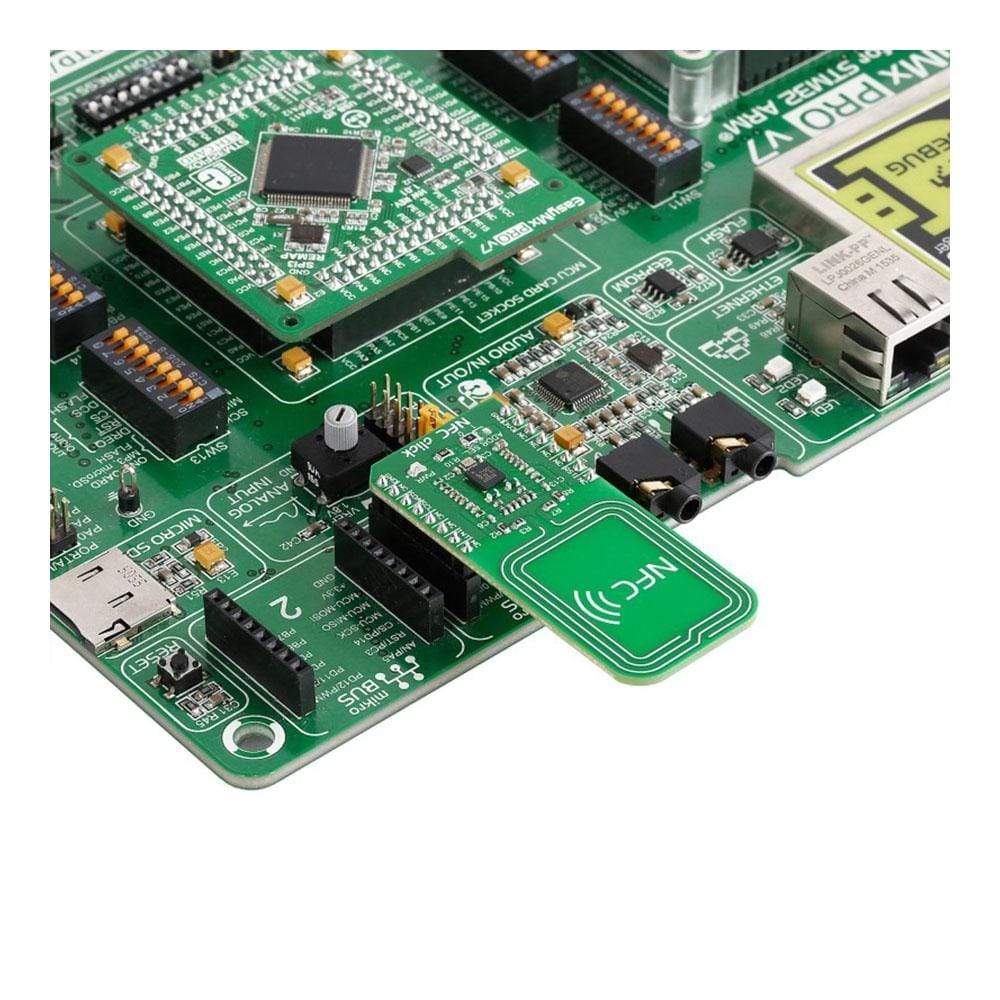
Overview
The NFC Click Board™ is a mikroBUS add-on board with a versatile near field communications controller from NXP the PN7120 IC.
NFC devices are used in contactless payment systems, electronic ticketing, smartcards, but also in retail and advertising inexpensive NFC tags can be embedded into packaging labels, flyers or posters.
Downloads
La NFC Click Board™ est une carte complémentaire mikroBUS avec un contrôleur de communication en champ proche polyvalent de NXP, le PN7120 IC.
Les appareils NFC sont utilisés dans les systèmes de paiement sans contact, la billetterie électronique, les cartes à puce, mais aussi dans le commerce de détail et la publicité. Des tags NFC peu coûteux peuvent être intégrés dans des étiquettes d'emballage, des dépliants ou des affiches.
| General Information | |
|---|---|
Part Number (SKU) |
MIKROE-2395
|
Manufacturer |
|
| Physical and Mechanical | |
Weight |
0.02 kg
|
| Other | |
Country of Origin |
|
HS Code Customs Tariff code
|
|
EAN |
8606015079165
|
Warranty |
|
Frequently Asked Questions
Have a Question?
Be the first to ask a question about this.

